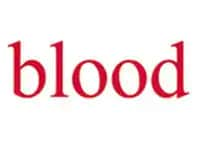Practice Essentials
Consistent features of Rubinstein-Taybi syndrome (RSTS) include intellectual disability, broad great toes, broad thumbs, and maxillary abnormality. Other features include characteristic facies, including high, arched eyebrows; beaked nose with short columella; abnormal palpebral fissure slant for race; and micrognathia. The syndrome was first described by Rubenstein and Taybi, in 1963. [1, 2, 3]
Most cases arise from sporadic, fresh mutations (1% recurrence risk) in the cAMP response element-binding protein (CREB)–binding protein (CBP) gene or from EP300 mutations. [4, 5]
Patients with RSTS are susceptible to frequent infections (pulmonary and otitis media), have a high anesthesia risk, demonstrate an ineffective response to vaccines (polysaccharide), and have dental abnormalities.
Workup in Rubinstein-Taybi syndrome
The following tests are used in the diagnosis and monitoring of Rubinstein-Taybi syndrome (RSTS):
-
Microarray
-
Whole exome sequencing (WES)
-
Targeted sequencing of CBP and EP300
-
Electroencephalogram - Strongly consider even in the absence of seizures
-
Measurement of growth and plotting of parameters on published syndrome-specific growth charts [6]
-
Ophthalmologic examination
-
Hearing evaluation in newborn period and auditory brain stem evoked response testing
-
Regular dental evaluations
-
Echocardiogram
-
Monitoring for constipation
-
Monitoring for cryptorchidism in males
-
Specialty orthopedic assessment of thumbs and toes
-
Ongoing scoliosis evaluation
-
Monitoring for obstructive sleep apnea
-
Tethered cord evaluation - Neonatal ultrasonography of the spinal canal in all patients; magnetic resonance imaging (MRI) in symptomatic older patients
Screening echocardiogram should be performed if murmur or cyanosis is present. Tumor surveillance (central nervous system neoplasms and rhabdomyosarcoma) is important as well.
Management of Rubinstein-Taybi syndrome
Primary care involves management of the following:
-
Infections
-
Dental abnormalities (crowding, abscesses)
-
Scoliosis
-
Obesity
-
Obstructive sleep apnea
-
Intellectual disability
Screening echocardiogram should be performed if murmur or cyanosis is present. Tumor surveillance (central nervous system neoplasms and rhabdomyosarcoma) is important as well.
Typically, physical therapy, speech and feeding therapy, and special education are important treatment adjuncts in infancy and early childhood.
Medications to avoid in RSTS include the following:
-
Muscle relaxants
-
Succinylcholine
-
Strong warning about out-of-hospital anesthesia
Pathophysiology
Three main genetic etiologies for RSTS have been identified, accounting for approximately half of all cases. They include the following [7, 8, 9] :
-
16p13 deletion syndrome - A submicroscopic, proximal deletion on chromosome 16p13.3, which includes the CREB-binding protein (CBP) gene, DNASE1, and TRAP1
-
Rubenstein-Taybi syndrome 1 (RSTS-1) - A point mutation or deletion in CBP (OMIM 180849); 50% of cases [5]
-
Rubenstein-Taybi syndrome 2 (RSTS-2) - A point mutation or deletion in EP300 (OMIM 602700); 3% of cases [4]
Mutation of the CBP gene has been detected in approximately 50% of affected individuals with RSTS. Mutations in EP300 on 22q13.2 account for a small number of cases. Epigenetic alterations have been suggested as a possible cause for the remaining cases, as approximately 50% of individuals with clinical features consistent with RSTS do not have a detectable deletion or mutation in CBP or EP300.
A study by Enomoto et al demonstrated the allelic heterogeneity of RSTS. The analysis, as performed in 19 patients, was aimed at CRP and EP300. In two patients, non-coding regions contained genetic alterations, including, in one individual, “a deep 229-bp intronic deletion” that produced a splicing error. In two more patients, with an EP300 variant, abnormal neural tube development, a rare clinical finding, occurred. Another rare finding, “anorectal atresia with a cloaca,” existed in a patient with a CRP variant. [10]
Epidemiology
Frequency
International
Beets et al stated that the birth prevalence of RSTS is 1 in 100,000-125,000. [6]
Mortality/Morbidity
Respiratory infections and complications from congenital heart disease are major causes of morbidity and mortality in the first years of life. Instability of the craniovertebral junction at C1-C2, hypoplasia of the dens, and fusion of the cervical vertebrae have been described as potentially life-threatening abnormalities. Issues with perioperative management, including collapsible airway and susceptibility to succinylcholine, have also been described. Wiley et al have provided guidelines for the clinical management and surveillance of patients with RSTS. [11]
Race
No known race predilection has been noted.
Sex
Males and females appear to be equally affected.
Age
RSTS is often identified in the newborn period when the characteristic physical features are noted (eg, prominent nose, broad thumb, broad great toe).
Prognosis
Patients with RSTS can have a normal lifespan. Major causes of morbidity and mortality in the first years of life include the following:
-
Respiratory infections
-
Complications from congenital heart disease
-
Instability of the craniovertebral junction at C1-C2
-
Hypoplasia of the dens
-
Fusion of the cervical vertebrae
-
Perioperative management - Collapsible airway, susceptibility to succinylcholine
Patient Education
See the following:
-
Facial abnormalities (eg, hypoplastic maxilla, prominent beaked nose, antimongoloid palpebral fissures) and broad thumbs in a child with Rubinstein-Taybi syndrome (RSTS).
-
Prominent beaked nose, low-set ears, and broad thumbs in a child with Rubinstein-Taybi syndrome (RSTS).
-
Broad great toes in a child with Rubinstein-Taybi syndrome (RSTS).








